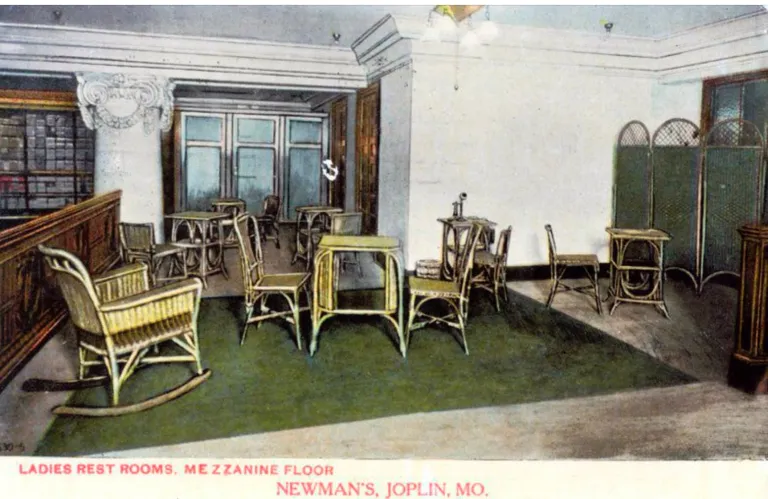From Boom to Relocation (1970 to 1972)
By the early 1970s, the Newman Brothers Department Store had been a fixture at the corner of 6th and Main Street in Joplin, Missouri, for more than sixty years. Since its grand opening in November 1910, generations of Joplin residents had shopped under its decorative ceilings, browsed its polished counters, and enjoyed meals in its tea room. For decades, the store had been a cornerstone of downtown commerce.
National retail trends during the late 1960s and early 1970s were shifting toward suburban shopping malls. Across the United States, traditional downtown retail districts were losing customers to large enclosed centers that offered acres of free parking, climate-controlled walkways, and a concentration of national chain stores in one location. Joplin experienced the same trend as suburban commercial developments expanded.

In 1970, Newman Brothers announced its intention to move the flagship store from the historic downtown location to the new Northpark Mall, which was being developed on the north side of Joplin. The move was a response to both national retail patterns and local economic pressures. Suburban malls were attracting more shoppers, while the downtown store faced parking shortages and the costs of maintaining an aging building.
By 1972, construction of Northpark Mall was complete and the new Newman Brothers location opened to the public. The relocation marked the end of an era for the original store, which had been a centerpiece of Joplin’s retail life for more than six decades. Many customers expressed mixed feelings. The new mall store provided modern facilities and a sleek contemporary design, but it could not replicate the architectural character and atmosphere of the original building at 6th and Main.
The departure of Newman Brothers was a significant setback for downtown Joplin. Department stores like Newman’s had served as anchor businesses, drawing steady crowds that also supported surrounding shops, restaurants, and entertainment venues. The loss of such a major tenant left the Newman Building without its primary source of daily foot traffic.
Local leaders and merchants voiced concern about the economic future of the downtown district. Newspaper editorials published at the time reflected the community’s divided emotions. There was optimism for the city’s growth and modernization through new development, but also a strong sense of nostalgia for the old store and apprehension over the uncertain future of the now-vacant landmark.
After Newman Brothers vacated the property, the building changed ownership. In the early 1970s it was marketed for potential redevelopment, including proposals for office use and mixed commercial space. The building retained its architectural prominence and its key location at the center of the city, but without the steady customer base that had supported it for so many years.
This period marked the beginning of a transitional phase for the Newman Building. In the years that followed, it would see a variety of new and sometimes unexpected occupants, including a major religious organization that would eventually make it their headquarters.
In the next installment, the series will examine the years from 1973 into the 1980s, when the Pentecostal Church of God acquired the building and the historic landmark entered a new chapter as both a spiritual and commercial hub.
